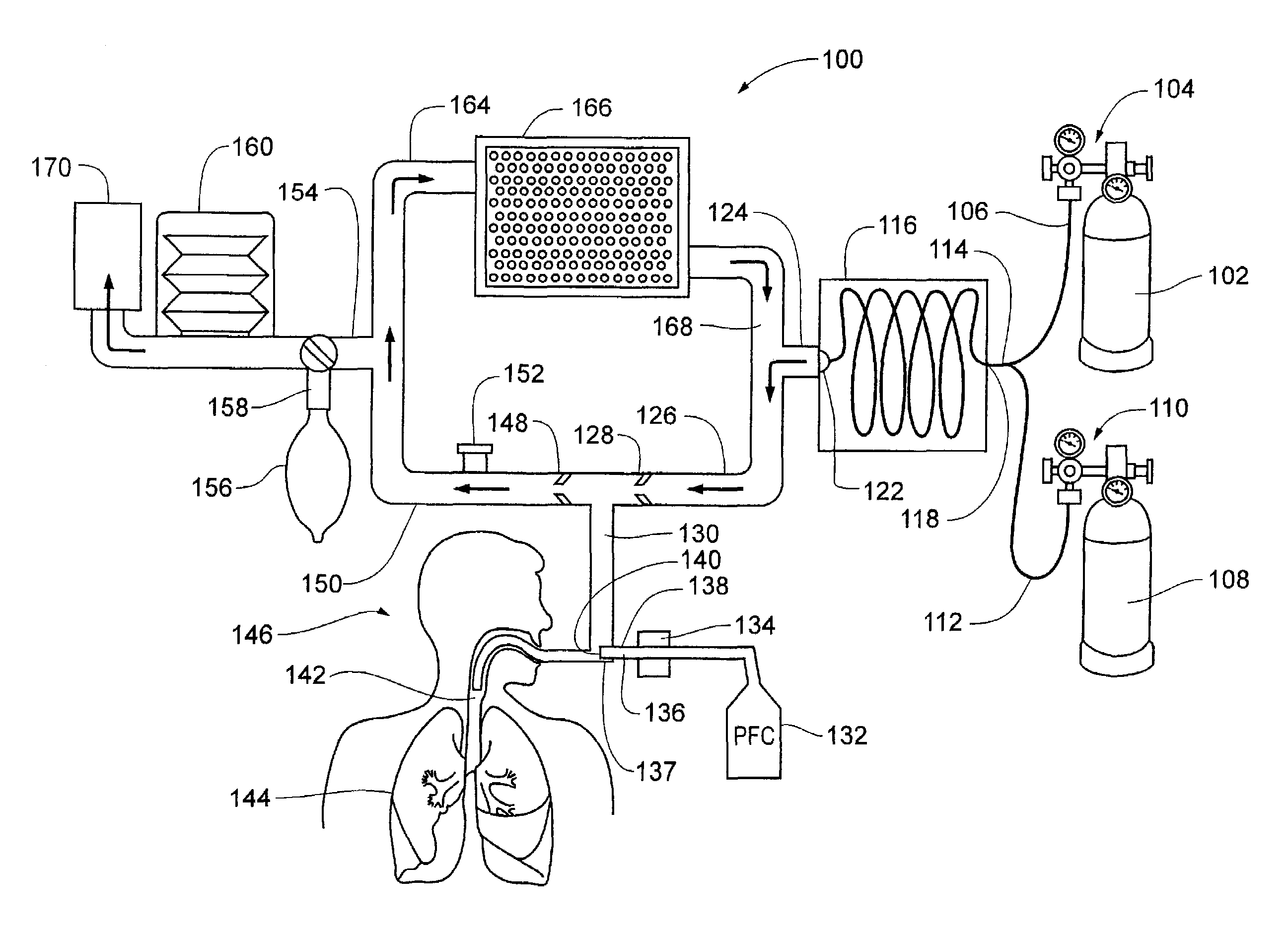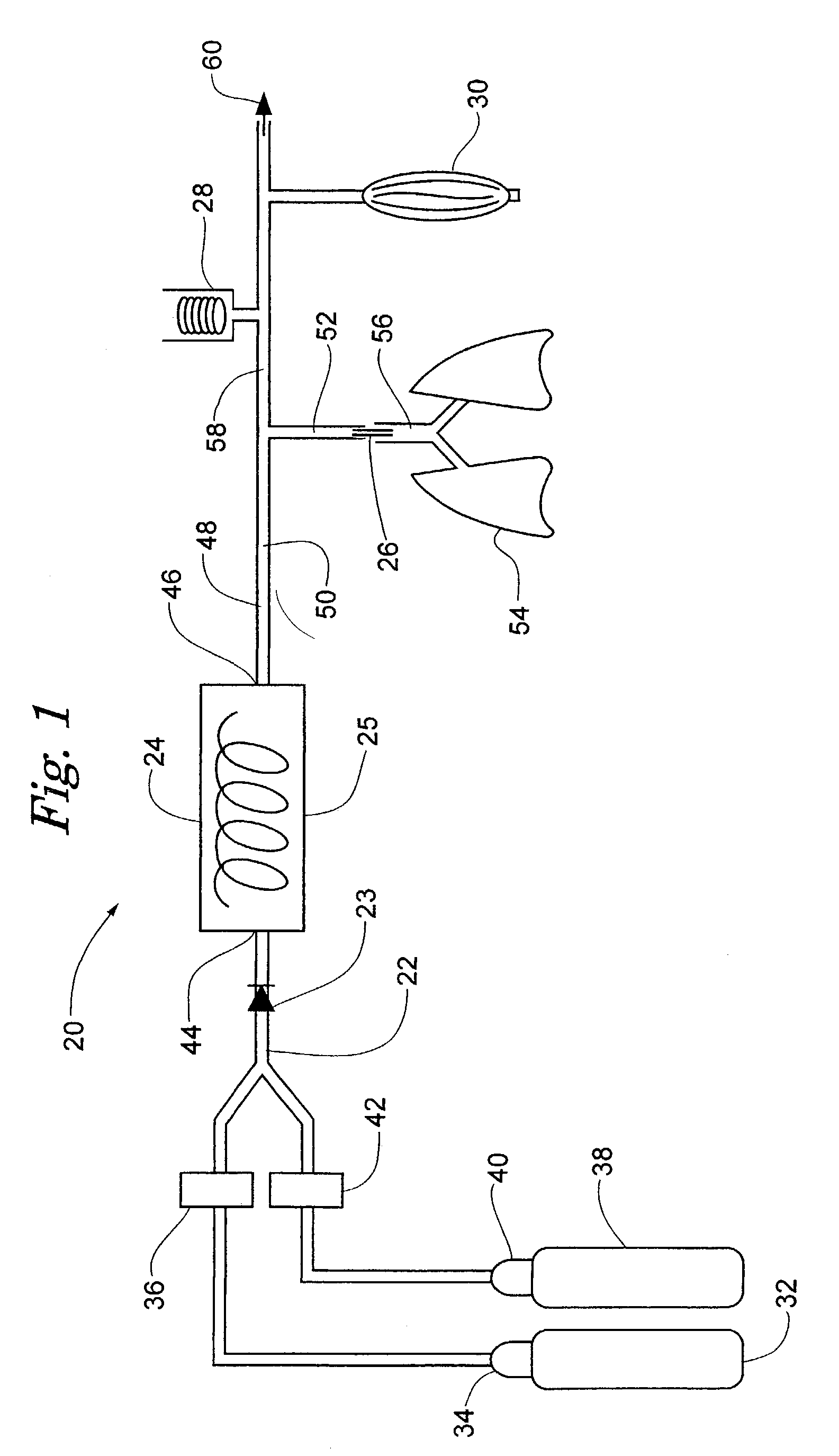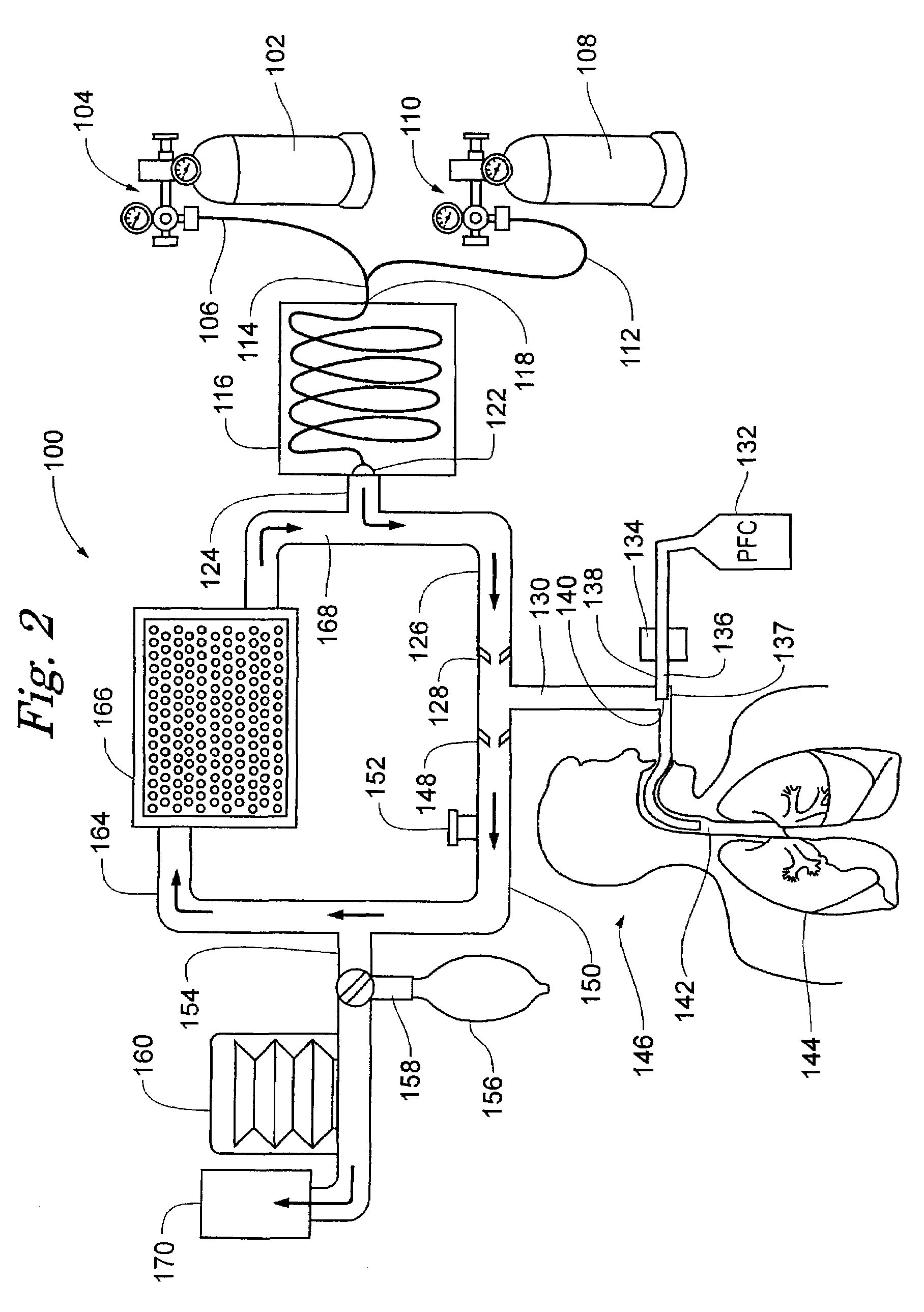[0014]This heat loss is further enhanced by lowering the temperature of the inspired gases. As per the
laws of thermodynamics, the heat exchange between the blood in the
lung alveoli and the inspired gases is directly proportional to the
temperature difference between them. However, in the present invention, the inspired gases are preferably not cooled below 0° C. to prevent
crystallization of water in the cells of the
respiratory tract. To the
inspired gas mixture, helium is added to improve the rate of
heat transfer. The
thermal conductivity and
thermal diffusivity of helium is much greater than other biologically compatible gases such as
oxygen,
nitrogen, or
carbon dioxide. As a result, more of the inspired gases equalize with the body temperature within the duration of each breath. This results in greater heat loss from the body than otherwise possible with air or other gas mixtures. In order to avoid
hypoxemia, the concentration of
oxygen in the
inspired gas mixture is preferably kept to at least 20%, with the remainder of the gas mixture preferably being helium. The heat loss from the lungs is intensified by addition of perfluorocarbon mist or liquid to the inspired gases. The
phase change of the perfluorocarbon from liquid from gas extracts a significant amount of heat from the lungs due to the
latent heat of
vaporization. Since the
heat transfer rate between the walls of the tracheobronchial tree and the droplets of perfluorocarbon is increased by helium, the mixture of heliox and perfluorocarbon works synergistically to amplify heat loss from the lungs. Other vapors and gases may be added to the helium-
oxygen mixture, if clinical circumstances warrant.
[0015]Medications may be administered to prevent the body's
reflex heat production mechanisms that are activated when the body is cooled. This includes medications to suppress the
thermoregulation center located in the brain and to suppress
peripheral heat production in the skeletal muscles, liver,
kidney,
adipose tissue and other cellular structures. General anesthetics, narcotics, and anti-
serotonin agents may be administered to suppress the central
heat regulation center; while
muscle relaxants, antithyroid agents and sympatholytic agents may be used to decrease
peripheral heat production.
[0016]One exemplary method includes administering
morphine and
propranolol to a patient, inserting an insulated
endotracheal tube and instituting
mechanical ventilation of the lungs to provide one and a half to twice the minute ventilation, using an inspired gas mixture, of 21% oxygen and 79% helium, which has been cooled to 4° C. Applicants' animal studies show that cooling of the body's
core temperature occurs at a rate of 0.15–0.3° C. per minute. This rate can be nearly doubled to 0.5 degrees C per minute when a 1% mist of perfluorocarbon is added to the cooled helium-
oxygen mixture. The desired level of hypothermia can be maintained by tapering the concentration of perfluorocarbon mist, and altering the minute ventilation and temperature of the helium-
oxygen mixture.
Hypothermia may be terminated by discontinuing the medications and warming the helium-oxygen mixture.
[0023]In some methods, applicants believe that the atomized, cooled, liquid mist within the lungs can form a boundary layer within the aveoli and smaller bronchioles, and then be vaporized into the vapor form. The mist can thus cool the, lungs through both the conduction of heat from the lungs to the cooler liquid, and through the
latent heat of
vaporization supplied by the lungs to the liquid. The now vaporized material can then be expelled from the lungs. The combined effect of having aveoli filled with helium-
oxygen gas mixture that rapidly transfers heat, together with cold and vaporizable liquids such as perfluorocarbons, can act synergistically to rapidly cool the body.
[0032]The present invention includes a
system for warming humans, the
system comprising: a first gas intake for
coupling to a
gaseous oxygen source; a second gas intake for
coupling to a gaseous helium source; a mixing region coupled to the first and second gas intakes for combining the oxygen and helium to produce a gas mixture; a heating region for heating the oxygen and helium; and a gas outlet for operably
coupling the heated gas mixture to a
breathing tube or
endotracheal tube or face
mask tube. In some systems, the heating region is disposed to heat the helium and oxygen before mixing. In other systems, the heating region is disposed to heat the helium and oxygen after mixing. Some systems include a recirculation loop for receiving the exhaled gases from the patient, removing or scrubbing at some of the
carbon dioxide from the exhaled gases, and adding the scrubbed exhaled gases to newly added oxygen and helium gases. Systems can also include a ventilator for providing a
positive pressure gas mixture to the patient. A
scavenging system coupled to receive gases exhaled from the patient can also be provided. Tubing for conveying the oxygen, helium, and gas mixture can include at least some of the tubing being insulated to substantially reduce cooling of the gas mixture from the
room temperature.
 Login to View More
Login to View More  Login to View More
Login to View More 


